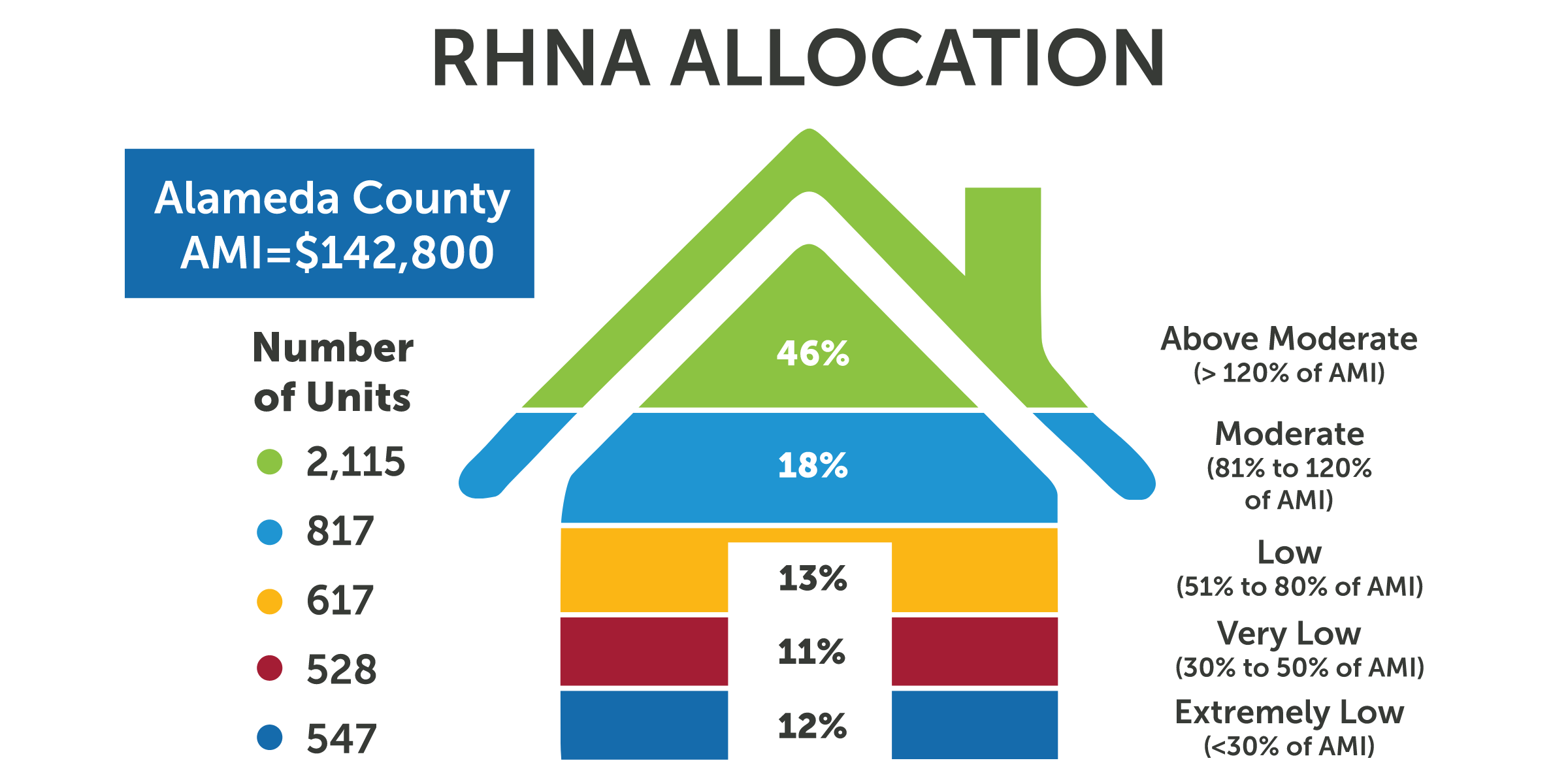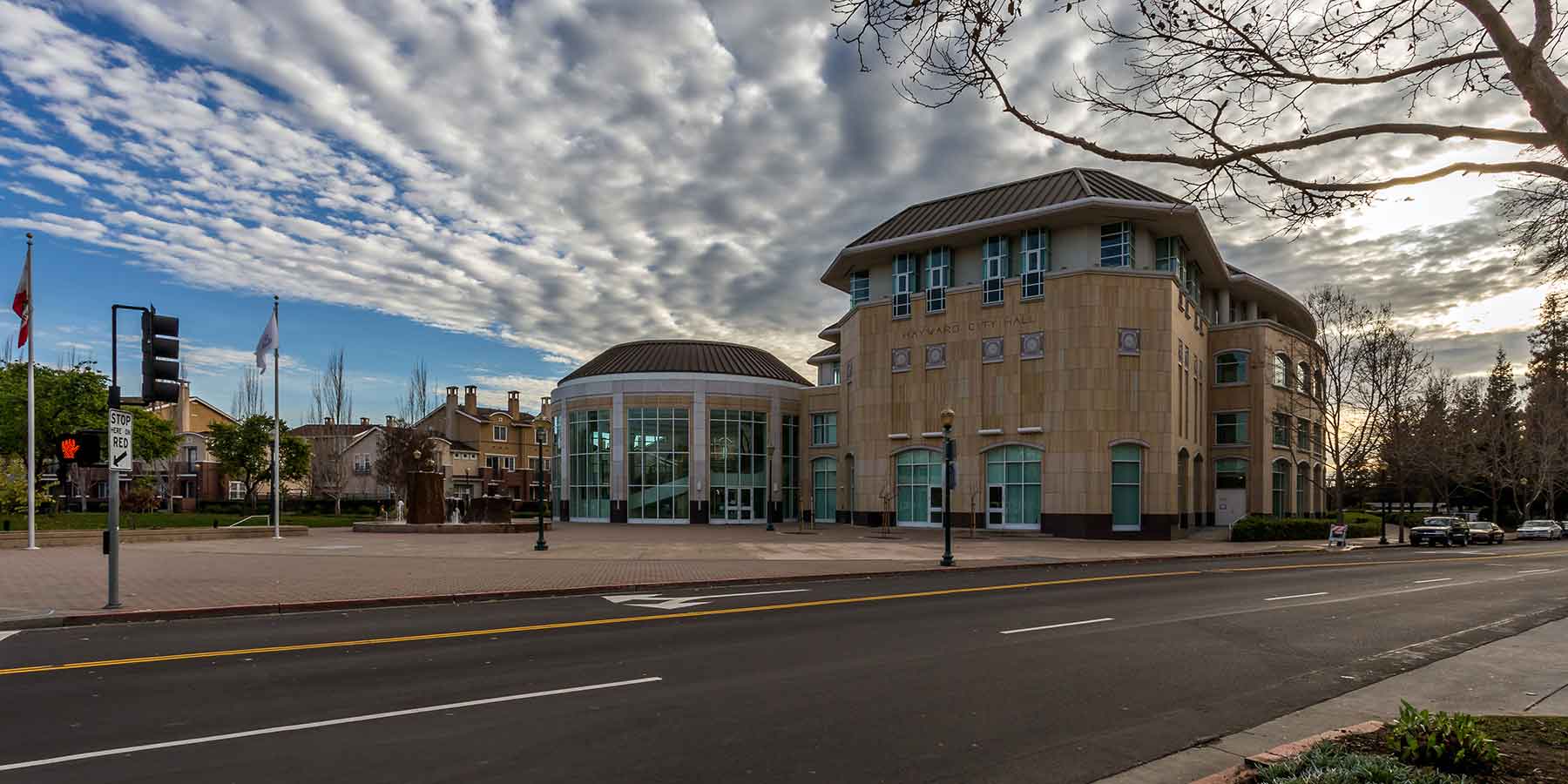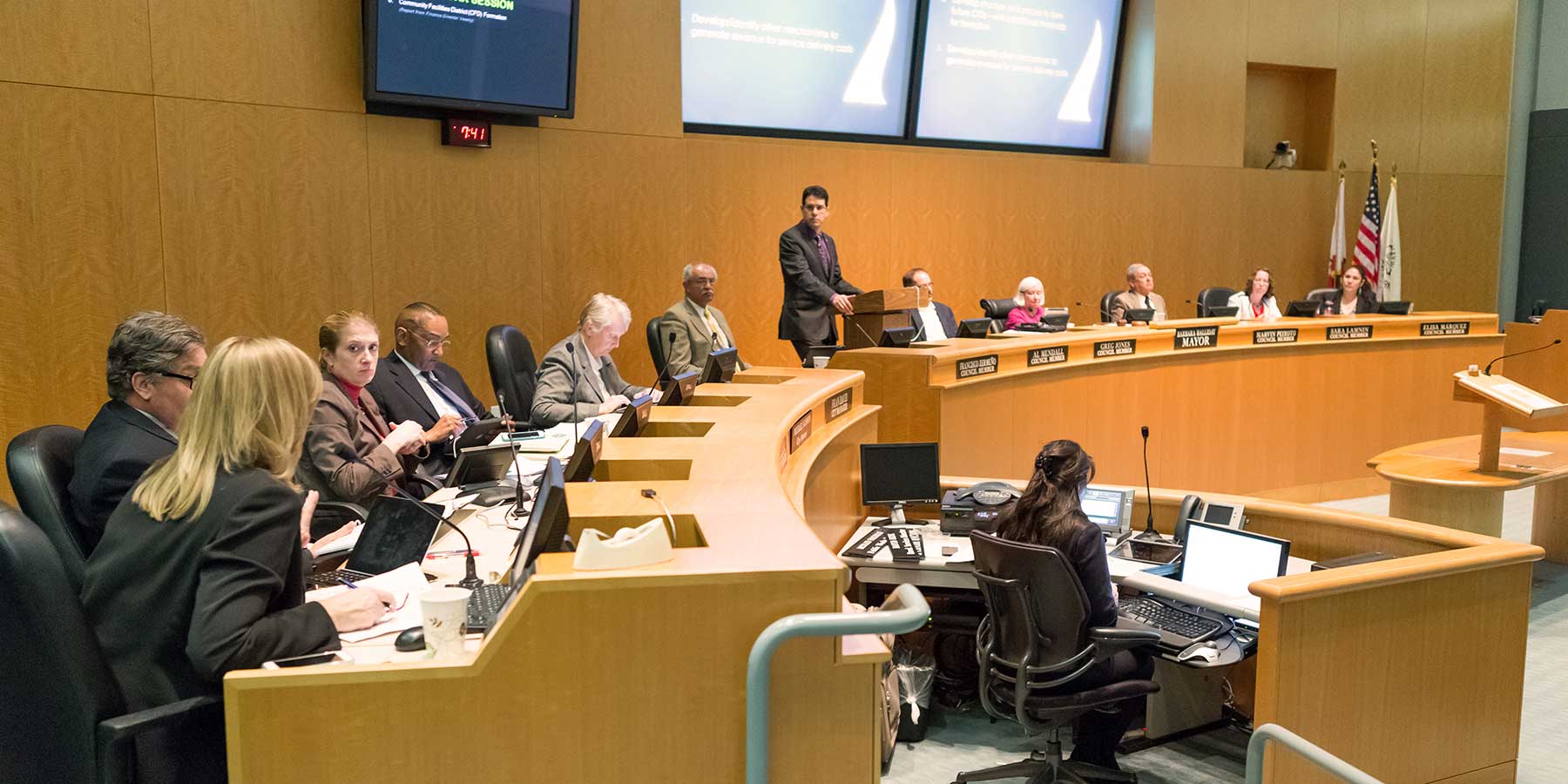Hayward’s Share of Bay Area Housing Need

The chart above depicts the RHNA Allocation, or Regional Housing Needs Allocation, for Alameda County. RHNA Allocation refers to the process by which the state of California assigns housing development targets to cities and counties. These targets indicate how many housing units a community needs to plan for over a set period, by income levels (extremely low, very low, low, moderate, and above moderate). The goal is to ensure enough housing is built to meet the needs of people across different income brackets and to address housing shortages. Each community must include these targets in their housing plans (called Housing Elements).
AMI, or Area Median Income, plays a key role in RHNA Allocation because it helps determine how housing needs are divided across different income levels. RHNA sets targets for housing units in categories based on percentages of AMI. In Alameda County the AMI is $142,800 and the income categories are:
- Above Moderate (Greater than 120% of the AMI)
- Moderate (81% to 120% of the AMI)
- Low (51% to 80% of the AMI)
- Very Low (30% to 50% of AMI)
- Extremely Low (Below 30% of the AMI)
Learn more:
California Department of Housing and Community Development —








